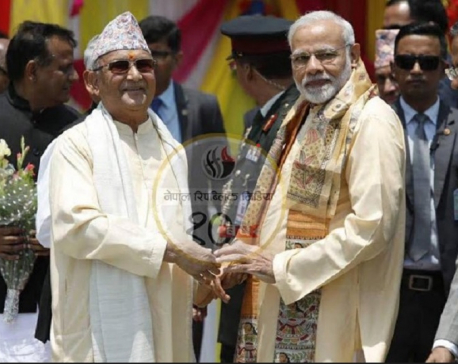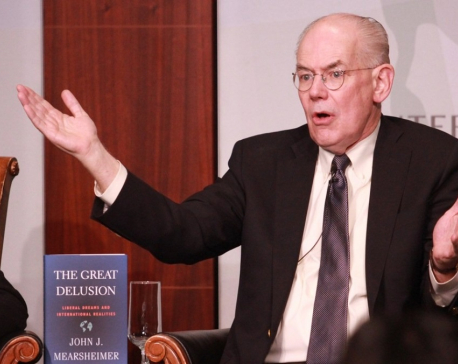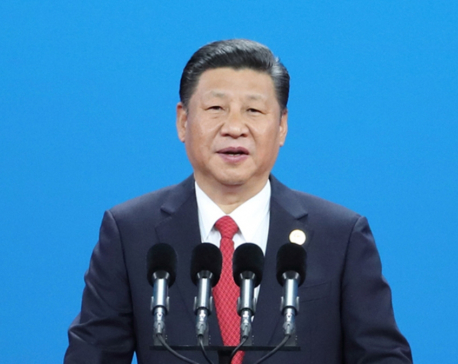
OR
_20200606180931.jpg)
India has not only rebuffed diplomatic overtures by Nepali embassy in Delhi, it seems in an all out mode to micromanage politics in Kathmandu to bring it back in its sphere of influence.
“If you have pissed them off, you have commanded their attention”, seems to be the settled wisdom of our time. Liberal restraint is out of vogue while instigating anger is the new fad. Though somewhat reprehensible tactic and mentally exhausting, it is shrewd. But it has its limitations.
The spate of events since Lipulek once again sprung into national consciousness highlights the perils of emotionally loaded rhetoric in a sensitive matter such as international relations. With inflammatory remarks coming from high offices of both Nepal and India, emotions have superseded reason on both sides of the border. It no longer matters that the so called tri-junction is a small piece of land where Indian army has been deployed since 1960s. The story has been framed in a way to make people angry, to be more visceral than cerebral.
The media on both sides have used anger to sell headlines. Politicians and intellectuals of all hues have gone overboard to prove their nationalistic credentials. Especially in Nepal, the pie is simply too big to leave for PM Oli alone. There have been talks of wire fencing the entire border between Nepal and India, to internationalizing the issue, to oh so outrageous, going to war with India even at the cost of few thousand lives. The more outrageous the remarks, more is the attention commanded. As debate turns rancorous, contempt each country harbors towards the other cannot be missed and the talk of age-old friendship suddenly sounds superficial.
In the polarizing environment thus ensued, heroes are discovered and glorified on daily basis while villains are maligned at the altar of high decibel nationalistic politics. Suddenly journalists with un-journalistic qualities like Arnab Goswami and his ilk, despicably known as part of ‘Godi Media’ in liberal circles of India consume our mind space more than the real issue. Any polarized society needs a bogeyman and few can match Goswami in this regard.
We are all Arnab Goswami today. Or that’s what we have become in our shrillness and shenanigans to counter him. Dr. Minendra Rijal who claimed on his show that debates in Nepal is not conducted as crudely as in India surely wasn’t serious. We have our own brand of puerile shouting match packaged in an over-abundance of self righteousness. In a bid to surpass Indian media in crassness we are caught up in our own paranoia.
Indian media is too diverse. There are media houses known for their liberal restraint – balanced, fair, and respectful of complexity, more concerned to get at the truth than to be entertaining. But that is too fickle and tame for idealistic and enthusiastic nationalists who prefer generous dose of emotions over a reasoned debate. That would deprive them of the opportunity to even out.
It is shocking how sanity gets sucked in the maelstrom of polarization. The likes of Sarita Giri and Manisha Koirala are the few whose remarks for tri-lateral settlements of the contentious issue by involving India and China in a peaceful way rightly summed up the situation. Nepal government’s bid to approach both embassies is in the same line. While Giri was rubbished in Nepal, Koirala was reviled by Indian media. In Nepal, the pitfalls of being a Madhesi and speaking on the matter of national interest that is an exclusive domain of ruling elites are too many. Add to it, groveling apology extracted by troll army from an actress for innocuous remark on the issue highlights the depth we have touched.
From the outset, it was a bit confounding as to why this was such a big story when generations of Nepalis have studied the map that did not include the disputed land. The road in question, connecting Mansarovar that has been inaugurated by the Defense Minister of India Rajnath Singh has been under construction for more than a decade.
One of the most authoritative essays written by Sam Cowan on the subject clearly highlights how Mahendra, arguably the greatest nationalist in Nepal’s history, and later Birendra never uttered a word despite having full knowledge of India’s control over the region. This happened during Panchayat era when nationalism and territorial integrity were high on agenda. Later, in a compelling article published by Sudheer Sharma, titled ‘Kalapani : China’s gift to India’, he argued how China had virtually endorsed the Indian occupation of Kalapani. This was published during Gyanendra’s absolute rule but nobody uttered a word.
Though Nepal has been consistently raising this issue after the advent of democracy in 1990s, it has fallen to deaf ears. With EPG report gathering dust, it did make Nepal’s task difficult to get the issue addressed. In a bid to provoke India to come to negotiating table, Nepal revised its map by adding the disputed areas. India has expressed serious reservations over such move calling it “unjustified cartographic assertion”.
With historical proofs in its favor, Nepal’s interest would be best served by quiet diplomacy, by being consistent and assertive. It is time media here realizes quiet diplomacy is not a sign of weakness but of strength. Consistent efforts by Nepali media to project Nepal veering towards China, artificial triumphalism displayed at each agreement both countries signed, most of which have hardly made any progress was immature. It was based on the assumption that India would work hard to win Nepali peoples’ heart who were upset with it after the blockade of 2015 with its tacit support. What if India didn’t? Are we prepared for the worst case scenario? Being temperate may not be eye-catching but it helps to make point.
Though it is nobody’s business, certainly not India’s to decide who Nepal should lean to, in times like these when global geopolitics is heating up and India and China are on border face-off, perception matters more than anything. Though Nepal wouldn’t like it that way timing of Chinese ambassador’s activism in Kathmandu to ‘save’ PM Oli or the opposition MCC is facing from a section of ruling party does create an impression of Nepal’s China tilt, leaving ample room for India to out-maneuver. Politics is hardly about truth but about power.
In a vague statement issued by China, so typical of its diplomacy, it has washed its hands off by calling the issue bilateral leaving Nepal on the brink of having a direct diplomatic face-off with India. India has not only rebuffed diplomatic overtures by Nepali embassy in Delhi, it seems in an all out mode to micromanage politics in Kathmandu to bring it back in its sphere of influence.
Add to this, Oli’s penchant for playing loud and obnoxious bully with dismissive sarcasm that often earns him ridicule and disdain serves nobody but himself. Did he really believe Coronavirus strain from India is stronger than that of China? He is not stupid. There is political logic to it. The aim was to pre-empt civil discourse and force opposition, within and outside the party to speak his language and hijack the narrative of governance failure, thereby cementing his tenuous position. Individuals who use such provocative rhetoric as a substitute for rational debate implicitly concede they can’t achieve their objective any other way.
You May Like This

What became of Rishiman?
India’s reluctance to heed Nepal’s appeal to resolve Kalapani issue diplomatically has exasperated Nepali people in and outside the country.... Read More...

Nepal should stay neutral; have good relations with both India and China for its security, stability: Prof. Mearsheimer
KATHMANDU, Aug 5: A prominent American scholar of international relations John J. Mearsheimer has suggested Nepal to stay neutral and... Read More...

China's Xi says disputes in Gulf should be resolved peacefully
BEIJING, Sept 23: Disputes in the Gulf should be resolved peacefully via talks, and all sides should remain calm and... Read More...





Just In
- MoHP cautions docs working in govt hospitals not to work in private ones
- Over 400,000 tourists visited Mustang by road last year
- 19 hydropower projects to be showcased at investment summit
- Global oil and gold prices surge as Israel retaliates against Iran
- Sajha Yatayat cancels CEO appointment process for lack of candidates
- Govt padlocks Nepal Scouts’ property illegally occupied by NC lawmaker Deepak Khadka
- FWEAN meets with President Paudel to solicit support for women entrepreneurship
- Koshi provincial assembly passes resolution motion calling for special session by majority votes







_20220508065243.jpg)






Leave A Comment